Note: For an optimal reading experience, please ensure your browser is rendering the page at 100% zoom ("Cmd/Ctrl +/-").
‘The Letter Kills’: Samuel Beckett’s Debt to Fritz Lang’s Films
TATJANA HRAMOVA
In the memory of Prof. Viktors Freibergs, a teacher and friend
Abstract: The world of Fritz Lang’s films is the world of shadows, mirrors and reflections; it is the world of letters and signs that wait to be deciphered – of names that multiply, echo and resonate but often do not fit. In all this – and in the innovative use of technology – Lang seems to have been an important influence on Samuel Beckett. This article attempts to illustrate this influence and show that the themes that the director investigates, especially in his films M and The Testament of Dr Mabuse, are central for Beckett’s œuvre. It becomes particularly evident in the way Beckett uses the letter M, the main feature of which seem to lie in its connection to the Other, the Not-I, a connection that was established by Fritz Lang in his thirteenth film M. Constantly resisting naming, Lang was the first to split the letter M into the W/M siglum, to dismember and reassemble the names into anagrams and letters, and to refuse to give a formal title to one of his films. Acknowledging this and identifying allusions to Lang’s films may help one to see some of Beckett’s famous lines, his characters and texts afresh.
In her biography of Samuel Beckett, Deidre Bair mentions that ‘Beckett had chosen Murphy as the title ... because he had loved Fritz Lang’s movie M and wanted to pay it homage in some way of his own’ (1980, 209). While it is clear that Beckett had chosen to call his novel Murphy primarily because it happened to be the name of its main character, the influence of Fritz Lang’s films on Beckett’s texts and nomenclature is significant and deserves more consideration than has been devoted to it hitherto.
In Beckett criticism Fritz Lang’s name appears only fleetingly: Konrad Schoell (1967, 53) and Daniel Albright (2003, 88) link the use of a tape recorder in Beckett’s Krapp’s Last Tape to Lang’s 1926 science fiction film Metropolis, James Knowlson and John Pilling (1979, 122) speak of the resemblance between the three women of Beckett’s Come and Go and the three mothers that appear at the end of Lang’s M (see Figs. 1 and 2), while Gaby Hartel (2005, 298, 300) compares Beckett’s use of Minimalism in the television plays to the techniques employed in early German films, among them, in Lang’s 1922 two-part feature Dr. Mabuse, der Spieler (Dr Mabuse, the Gambler) and M.
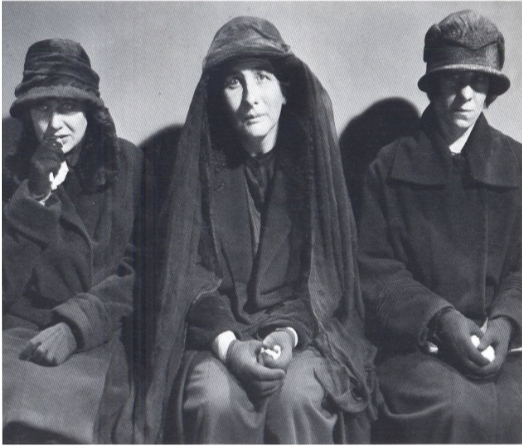
Fig. 1 Three Mothers in Fritz Lang's M (1931)
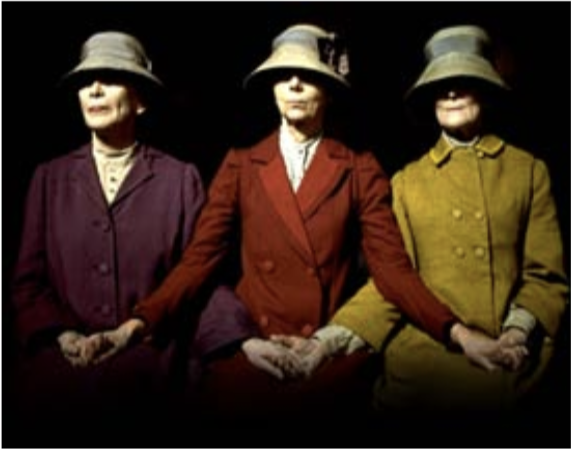
Fig. 2 Three women in Beckett's Come and Go (1965)
Fritz Lang’s films and Beckett’s texts are far stronger than these examples make us believe. Following the tendency in German cinema of that period, sometimes referred to as Le Caligarisme (Hartel, 2005, 307), Lang’s films present the human being as disintegrated, alienated from himself and others. His characters are ‘split into scattered visual and acoustic images’ (Butler, 2005, 487), they change disguises and sometimes even bodies; they hear voices, meet ghosts and are pursued by their doubles. The world of Fritz Lang’s films is the world of shadows, mirrors and reflections; it is the world of letters and signs that need to be deciphered – of names that multiply, echo and resonate but often do not fit. In all this – and in the innovative use of technology that his films often incorporate – Lang seems to have been an important influence on Beckett.
This influence becomes especially evident if one analyses Fritz Lang’s first sound film M, which was released on 11 May 1931 (Eisner, 1976, 409). M tells a story of Hans Beckert, a child murderer whom the police vainly try to capture, staging raids and rounding up every suspect. The criminal underworld becomes increasingly concerned with the unwanted attention from the police and decides to catch the murderer themselves. Once the killer is identified, the letter ‘M’ in white chalk is stamped on his back, which helps the criminals to track him down. Captured, the murderer is put on trial for his life in a kangaroo court. He pleads for mercy, claiming that he does not want to kill and cannot control his homicidal instincts. The police close in and rescue the killer from the criminals so that he can stand fair trial. The film ends with judges preparing to announce their sentence, while the mothers of the three killed children call for vigilance. Behind this seemingly simple plot hides a deep exploration of the divided Self, equivocating about the degree of control we have over our own deeds.
The problem of doppelgänger is considered to be one of the key themes of German romanticism (Eisner, 1976, 113), and Fritz Lang, along with other German directors, turned to it again and again. In M the killer’s split personality is manifested through different visual and acoustic techniques. For example, at the beginning of the film, when the murderer approaches his victim, we see only his shadow and hear a disembodied voice (Fig. 3):
Fig. 3 The first appearance of the murderer in Fritz Lang’s M
later, when he writes a letter to the Press, he is shown from the back (Fig.4):
Fig. 4 The murderer writes a letter to the Press
and, finally, while a graphologist is dictating his analysis of the murderer’s handwriting, we see Beckert’s reflection in the mirror as he contorts his lips, pulls down the corners of his mouth, bulges his eyes and exhibits ‘a truly frightening visage’ (Kaes, 2001, 56; see fig. 5):
Fig. 5 The man in the mirror
Ironically, the only person who eventually manages to identify the murderer is a blind man selling balloons on the street – and he does so by hearing Hans Beckert whistling the tune from Edvard Grieg’s Peer Gynt. We recognize the tune as well – since we have heard it earlier in the film – but Lang makes us blind by not using the classical shot-reverse shot technique and, instead, showing the familiar shadow of the murderer fall on the face of the blind man (Fig. 6):
Fig. 6 The murderer is identified
Thus, doubling the body by means of shadows and mirrors, splitting the sound and the body, Lang creates a phantom-like doppelgänger of the killer who, though he does not have a material form, is always present in the film.
Similar techniques were used by the director in his next picture, Das Testament des Dr. Mabuse (1933), where the voice of the villainous doctor turns out to be recorded, and his silhouette behind a curtain – to be a cardboard model (Fig. 7):
Fig. 7 Mabuse’s elusive presence
In this film, Dr Mabuse is first shown writing feverishly on his bed in the asylum (Fig. 8), then sitting and staring into space as ‘ein lebendig Toter’ [1], a living corpse (Fig. 9), and, finally, as dead. His presence however transgresses the death and is manifested through his voice, his writings and his ghost.
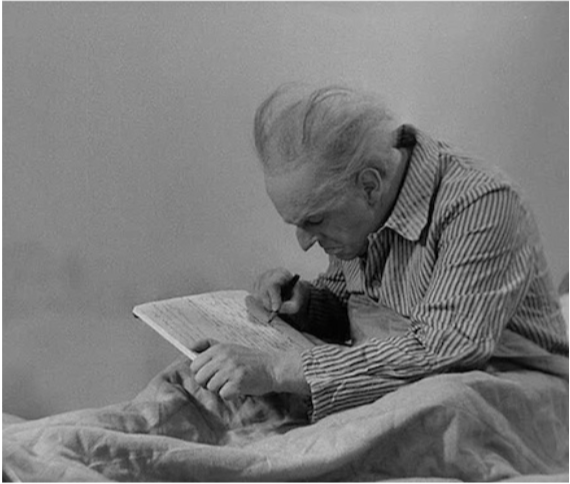
Fig. 8 Dr Mabuse writing his testament in Fritz Lang’s Das Testament des Dr. Mabuse
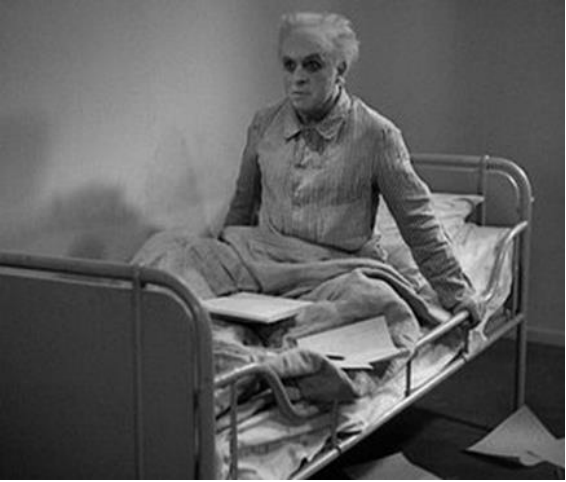
Fig. 9 Dr Mabuse as ‘ein lebendig Toter’
Mabuse’s notes, gathered, systematized and read by his doctor, Professor Baum, open the door to Baum’s ‘transformation into a second Mabuse’ (Butler, 2005 , 489). As the professor immerses himself into the text, the ghost of Dr Mabuse appears before him with his brain exposed, large eyes almost lacking eyelids and leaping from their sockets. Then he sits down on the chair where Prof. Baum is sitting, in this way blending into him and turning him into his double (Fig 10):
Fig. 10 Prof. Baum meeting the ghost and turning into Dr Mabuse
As a result, it is through the word – the testament of Dr Mabuse – that the transformation is made possible, and it is though the word – the name of Prof. Baum – that this transformation is manifested. Specifically, the surname ‘Baum’ is an anagram of ‘Mabu’, which, in its turn, is a part of ‘Mabuse’.
The names in Lang’s film M function in a similar way – bearing witness to the links between the characters. Thus, for example, the element ‘Beck’ in the murderer’s surname clearly connects him with the killed girl, Elsie Beckmann. Indeed, defending himself before the kangaroo court, Hans Beckert says that he is haunted by the evil inside of him – ‘the fire, the voices, the torment!’ (Lang, 1973, 103) – which he should obey. ‘It’s me, pursuing myself!’ (ibid.),[2] he says, and goes on to describe how he wants to escape but is forced to act against his will. Beckert is thus presented as a victim of his doppelgänger, whose continued presence in the film is revealed through the disembodied voice, the shadow, the grimacing reflection and the letter M.
The letter is first drawn on the palm and then stamped on Beckert’s back, thus naming the murderer within him (Fig. 11):
Fig. 11 Marking the murderer with the letter M
By Old English law the thumb of one convicted of manslaughter was branded with M (Jobes, 1961, 1030). Beckert has the letter slapped on his back and first discovers it when looking in a mirror next to the shop window. Shocked, he stares at the reflection and ‘his facial expression resembles the grimace he made in the earlier mirror scene’ (Kaes, 2001, 64; see Fig. 12).
Fig. 12 Beckert notices the letter M on his shoulder
Therefore, M is for the Mörder (murderer) [3] who is always at Beckert’s back, the double whom he tries to escape and whose voice urges him to kill.
Its mirror image being the same as the real self (Garnham, 1973, 9), angular M was seen by Gnostics as twin mountain peaks and was believed to symbolize transformation (Jobes, 1961, 1030). It is, thus, the letter of the doppelgänger. At the very same time M is the letter of Mütter (mothers), whose ghosts, Beckert claims, ‘never leave... [him]’ (Lang, 1973, 104).[4] It should also be noted that, when Heinrich decides to mark the murderer, he draws M on his palm spontaneously (see Fig. 11), as if following ‘the outlines of creases that we all have’ (Kaes, 2001, 63). M is, thus, the letter we are all branded with, the letter that stands for Mensch (human being) or Mann (man) or man (impersonal pronoun) and, by extension, for anyone and no one in particular.
At this point one can conclude that Fritz Lang’s influence extends over most Beckett’s texts, and the themes that the director investigates, especially in the two films discussed above, are central for Beckett’s œuvre. Much has been written on Beckett’s use of technology (Kenner, 1962, 117-32; Esslin, 1982; Brater, 1985 ; Maude, 2009), on the function of the voice in his plays (Catanzaro, 1989 ; Perloff, 1999 ; Katz, 1999), on doubles (Henning, 1988, 122-58) and ghosts (Maude, 2009, 113-34; Hartel, 2007, 174-87), on the search for the Self and its representation (Hoffman, 1964; Butler, 1984; Simon, 1991). It seems, however, that Lang’s influence goes far beyond the thematic level, and it will not be an exaggeration to say that Beckett’s texts bristle with allusions to Fritz Lang’s films.
For example, Dr Mabuse’s cardboard figure and the machine transmitting his voice in Fritz Lang’s Das Testament des Dr. Mabuse looks surprisingly similar to Krapp and his machine in Beckett’s 1958 play Krapp’s Last Tape (see Figs. 13 and 14).
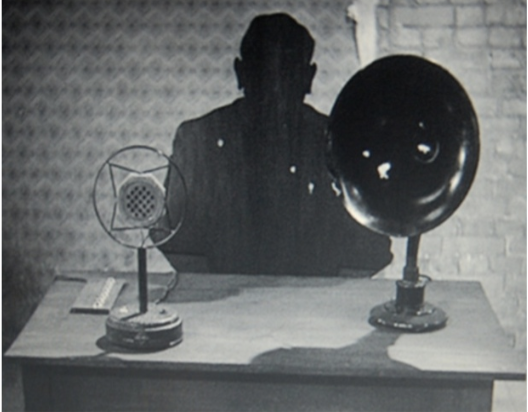
Fig. 13 Dr Mabuse’s cardboard figure and the machine transmitting his voice in Lang’s Das Testament des Dr Mabuse (1933)
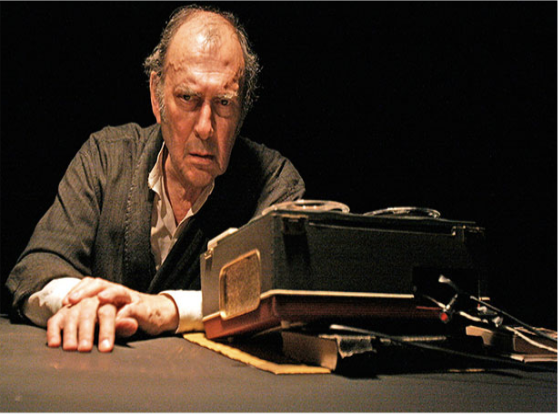
Fig. 14 Krapp and his tape recorder in Samuel Beckett’s Krapp’s Last Tape (1958)
The image of Dr Mabuse sitting on his bed, silent and completely withdrawn into himself, with only his hand moving quickly, writing down his legacy (see Fig. 8), reminds one of Beckett’s character Malone, who is also confined to a bed and spends time telling stories, ‘almost lifeless, like the teller’ (Beckett, 2006c, 174).[5] As it has been mentioned earlier, Mabuse is described by the attendant of the asylum as a ‘living corpse’ with eyes that ‘practically paralyse you’ (see Fig. 9).[6] When he appears as a ghost before Dr Baum (see Fig. 10), his colourless eyes are huge, eyelids hardly noticeable and pupils dilated – the image that is highly reminiscent of Beckett’s description of Mr Endon, also an inmate in the asylum, whose name means ‘within’ in Greek (Ackerley et al., 2004, 177) and whose large eyes had no colour and the ‘pupils were prodigiously dilated’ (Beckett, 2006d, 149).
Dr Mabuse’s frequent use of gas in his crimes and his attempted attack on the chemical plant in order to release enormous amounts of gas and by this senseless act create chaos may give some insight into Murphy’s fascination with gas, which he equates with chaos and which finally kills him (Beckett, 2006d, 106, 151). It also should not be overlooked that the voice of Dr Mabuse’s ghost, as it is suggested by Lang’s mis-en-scène (see Fig. 10), comes from Professor Baum’s own head, and, as such, may be compared to the Voice that assails Joe in Beckett’s 1965 teleplay Eh Joe. Interestingly enough, in the two versions of the play that Beckett directed for SDR (see excerpts from Version 1 (1966) and Version 2 (1979)), the timbre and tempo of the attacking dead voice that Joe hears is strikingly similar to Dr Mabuse’s ghostly whisper.[7] In his monologue before the court of criminals, Hans Beckert also invokes the voices that would not leave him alone and, thus, have considerable affinity to the voices that many of Beckett’s characters hear.[8]
Moreover, the murderer’s split personality that was mentioned earlier in this article and that he characterizes by the phrase ‘me pursuing myself’ (Lang, 1973, 104), may be compared to the conflict of identity many of Beckett’s characters experience, as it is well exemplified by the Unnamable’s ‘I’m waiting for me there’ (Beckett, 2006a, 407), Moran’s pursuit of Molloy or by the whole of Not I and Ohio Impromtu. Incidentally, the famous ending lines of The Unnamable seem to echo the end of Hans Beckert’s monologue in M, where he says:
Who knows what it feels like to be me? How I’m forced to act... His eyes close in ecstasy. How I must... Don’t want to, but must... He screams. Must... Don’t want to... must. And then... a voice screams... I can’t bear to hear it. He throws himself against the wooden barrier in a paroxysm covering his ears with his hands ... I can’t... I can’t go on. Can’t go on... Can’t go on... Can’t go on... (Lang, 1973, 104; watch the monologue).[9]
If the unnamable’s ‘you must go on, I can’t go on, I’ll go on’ (Beckett, 2006a, 407) is indeed an allusion to Lang’s M – which seems very likely – it certainly gives a slightly different dimension to Beckett’s famous lines. In addition, the title of this Beckett’s novel is not, strictly speaking, the title, as it does not name but proclaim the impossibility to name. On 10 April 1931, a German newspaper Film-Kurier announced that Lang is to introduce an innovation – a film without the title. What is today largely ignored is indeed true – M is the first film where the title is substituted by a cryptogram that has no meaning and, therefore, it is also the first film without the title (Eisenschitz, 1990, 34).
Now that we have shown how substantial Beckett’s debt to Fritz Lang is, it will not seem implausible to suggest that the origins of M in the names of Beckett’s characters also go back to Lang. It is true that both Lang’s and Beckett’s Ms are believed to carry resonances of ‘mother’ and ‘man’ (Janvier, 1966, 271; Kaes, 2001, 63); it is also true that, as Ruby Cohn has pointed out commenting on the names of Beckett’s characters, ‘the fact that M is the thirteenth letter of the alphabet is scarcely fortuitous’ (1962, 169). The main feature of the letter, however, lies in its connection to the doppelgänger, the Other, the Not-I – the connection that was established by Fritz Lang in his thirteenth film M (Simsolo, 1990, 1).
Acknowledging this and identifying allusions to Lang’s films in Beckett’s texts may help one to see many names of Beckett’s characters afresh. In this way, for example, the monosyllabic names that end with M – like Bom, Bam, Bim – may actually be perceived to refer to Baum, the name of Dr Mabuse’s double. One should also not overlook that, while the murderer was labelled with M, his real name was Hans Beckert. German r in the surname ‘Beckert’ is called ‘vocalic r’ and is so reduced in this position that ‘it is no longer pronounced as a consonant but as a vowel [e]’ (Hall, 1992, 64). This makes ‘Beckert’ sound almost exactly like ‘Beckett’ and opens the possibility of seeing the author’s ‘I’ behind every ‘Not-I’ signified by M.[10]
While it may be claimed that Beckett’s enduring fascination with the letter M takes its origin and meaning from Fritz Lang’s films, the role of W, an overturned M, seems to be more elusive. If M stands not so much for the ‘mother’ as the doppelgänger, what, in this case, is the significance of W and why is it often substituted by and juxtaposed to the letter M?
In Das Testament des Dr. Mabuse, Hofmeister is prevented from transmitting the name of the person behind the crimes to inspector Lohmann. When a mysterious assailant backs him up against a window, he, however, manages to scratch something incomprehensible on the surface of the glass. Finding Hofmeister’s message, inspector Lohmann is not able to read it and understands only one letter: ‘Donnerwetter ja! ... Buchstaben im Glas! ... W... W? ... Ob das wohl ein Name sein soll?’ (Fig. 15).[11] When the window pane is analysed at the crime laboratory, it appears that Hofmeister wrote with his left hand behind his back and used mirror writing. ‘If you turn it over, then”, the technician says to Lohmann, “there... Ma-bu-se’ (Fig. 16):
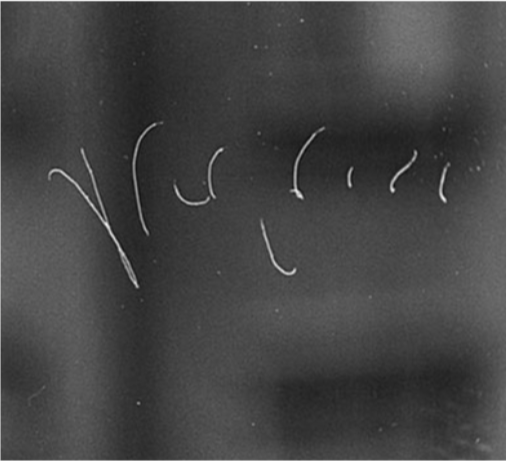
Fig. 15 Hoffmeister's message to Lohmann
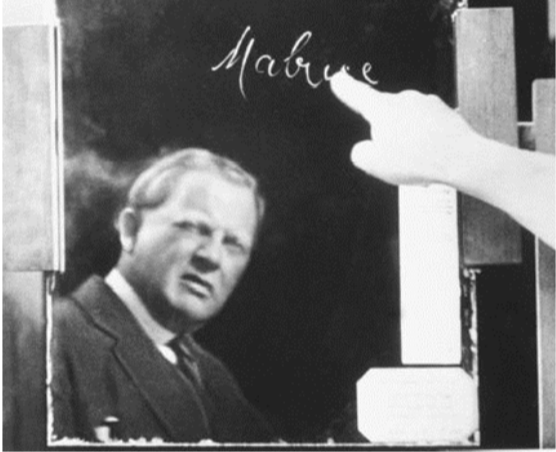
Fig. 16 Hoffmeister's message deciphered
The name of Dr Mabuse is therefore never truly pronounced and the film itself, as Michel Chion says in The Voice in Cinema, ‘embodies in a striking way the active power of the not- said’ (1999, 71). The criminals, to whom Mabuse appears as a silhouette and voice behind the curtain, call him ‘boss’ or ‘the doctor’, Hofmeister does not manage to transmit the name and ciphers it into a cryptogram instead, and Baum who acts on doctor’s behalf has a name that is a partial anagram of ‘Mabuse’. The name circulates in different written and spoken forms until the end of the film when Professor Baum returns to the asylum, enters the cell once occupied by Mabuse but since then assigned to Hofmeister and introduces himself: ‘Allow me to present myself. My name is Mabuse, Dr Mabuse’. Then he sits down on the bed and begins to tear paper, just as Mabuse did at the end of Dr. Mabuse, der Spieler. At this moment Hofmeister is finally able to pronounce the name: ‘The name of the man is Mabuse, Inspector, Dr Mabuse’, he shouts to Lohmann.
In this way, at the end of the film, Baum is fully identified with the dead Mabuse and takes his place. Being Mabuse, Baum, however, is not Mabuse – the name is empty and never allows us to reconstitute an integral body (Chion, 1999 , 35). As the places of the letters in the name ‘Baum’ need to be changed twice to get ‘Mabu’, so it is necessary to turn the window pane around twice to get ‘Mabuse’. Hence the message that Hofmeister left on the glass spelled Prof. Baum’s true identity but never actually identified Mabuse. As Michel Chion had shrewdly pointed out ‘Mabuse is nothing ... more or less than what people construct him as’ (1999, 36) – he is a voice without a body, a body without a voice, a name without identity (ibid.). These disassembled, dissonant elements are manifested through the ever- transforming, ever-elusive, dismembered name. It seems, thus, that in M Lang brands Hans Beckert with the letter that can never be deciphered to show the murderer’s split personality, and in Das Testament des Dr. Mabuse he achieves the same by an overturned M of Mabuse’s name – the letter W that Lohmann is able to read on the glass.
W is a ‘double’ letter, ‘the emblem of Gemini and other celestial twins’ (Jobes, 1961, 1660), and in Lang’s picture it becomes a part of the code, a mystery and a mistake – a misinterpreted M that we see springing away from Mabuse’s name in the first frame of the film (Fig. 17).
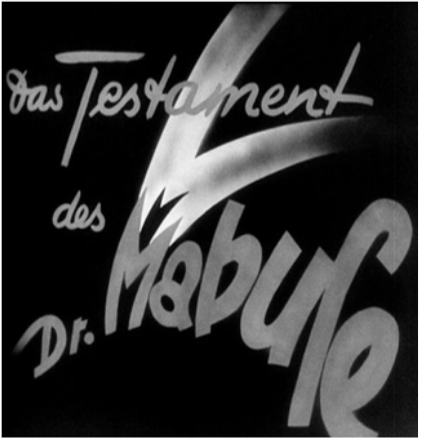
Fig. 17 The first frame of Lang’s Das Testament des Dr. Mabuse
If we write W not close to the letter M but immediately under it, we will see that M and W are actually one and the same letter split into two parts. Therefore, Lang’s usage of W in Das Testament des Dr. Mabuse does not differ markedly from the way he used M in his previous film – both letters are the letters of the Other, but together they are the letters of the split personality.
Jacques Lacan’s concept of the variously termed ‘split subject’, ‘divided subject’ or ‘barred subject’ might be useful here (Lacan, 1977, 269-289). In Lacanian psychoanalysis the subject is envisaged as manque-à-être, i.e. as a non-being that exists only insofar as it accepts language and puts a sign instead of himself – such a sign that would present him in his absence, take his place and grant him meaning in the symbolic register. In this process, called by Jacques-Alain Miller ‘suture’ (1977), the subject is irrevocably alienated from his physical self, and a name becomes the signifier of this absence in being (Lacan, 1973; see also Fink, 1997, 53). In other words, in the symbolic order, a name acts as a signifier that signifies not one specific subject, but rather the lack of it.[12] Therefore, alienation is the direct consequence of learning one’s mother tongue, which is never our language but some Other’s tongue – the mOther’s tongue. Needless to say, Lacan often equates the Other with the mother when discussing childhood experiences (more on this see Fink, 1997, 3-7).
The Other, however, is not only the foreign language that we must learn and that we call our mother tongue – according to Lacan, the ego itself is ‘an other’,[13] while the unconscious is the Other’s discourse. The subject is thus understood to be split into two different forms of otherness – ego as a false sense of self and unconscious as the automatic functioning of language. Contrary to Freud, Lacan believed that neither the ego nor the unconscious are the seats of the true subjectivity. The unconscious is as foreign and unassimilated as the ego but, while the ego tries to make sense of the world, the unconscious has nothing to do with meaning and understanding. Unconscious processes are grounded in the realm of non-meaning and are based on association and displacement. As Bruce Fink has noticed, the unconscious pays attention to anagrams and ‘has a tendency to break words down into their smallest units – phonemes and letters – and recombine them as it sees fit’ (1997, 9) ignoring any logics of the conscious thought. It appears, therefore, that, in Lacan’s understanding, the two avatars of the subject – the ego and the unconscious – are irrevocably split and that the subject itself is nothing but this very split between the two forms otherness.
This idea helps us to conclude that – most probably owing to Fritz Lang’s influence – the M/W siglum in Beckett is actually the split letter M, which represents the subject as divided and absent. When not “split”, M is the letter of the doppelgänger and hence also of the mother as the Other whose language the subject speaks.[14] Therefore, by giving the majority of his characters names starting and ending either with M or with W, Beckett seems to recreate the processes of the unconscious and show his characters to be the avatars of the same subject by means of association and displacement. It should also be noted that, similarly to Mabuse’s dismembered name, the names of Beckett’s characters are the signifiers not of the subject but of the lack of the subject.[15] Therefore, while clearly succeeding in imitating the unconscious as a constant playing of the signifying chain, these names actually fail to name the unnameable – they fail to name the subject of the unconscious.
In conclusion, it should be said that the insistence on certain letters in Samuel Beckett’s texts is hardly fortuitous. Nevertheless, it is a myth that these letters can have some specific explanation and, even more so, that they are a part of a secret code that needs to be deciphered. Like the letters in the two Fritz Lang’s films that we discussed, M and W in the names of Beckett’s characters are there to give rise to uncertainty and help to create the world of anonymity and non-being populated by phantoms – ‘abode where lost bodies roam each searching for its lost one’ (Beckett, 1972, 7).
Tatjana Hramova is an Associate Professor at the Faculty of E-Learning Technologies and Humanities at Riga Technical University, Latvia, where she teaches rhetoric, text analysis and stylistics. She graduated from the University of Reading, UK, writing a doctoral thesis on the poetics of names in Samuel Beckett’s texts. Her areas of research include literature of the twentieth and twenty-first centuries, film studies, literary onomastics and translation. She is also interested in multimodality and investigates how different semiotic modes interrelate to form meaning. She has published in the areas of translation, onomastics and literary criticism, given a number of papers on Andrei Tarkovsky and Fritz Lang, as well as looked into the naming practices of Samuel Beckett, James Joyce and William Shakespeare.
Notes
[1] Citations from Das Testament des Dr. Mabuse follow the soundtrack of the film.
[2] ‘Ja! Manchmal ist mir, als ob ich selber ... hinter mir herliefe!’ (qtd. in Gehler et al., 1990, 147).
[3] Cf. Alfred Hitchcock’s 1955 classic Dial M for Murder, the title of which undoubtedly alludes to Fritz Lang’s M.
[4] ‘Und mit mir rennen die Gespenster von Müttern ..., von Kindern ... Die gehn nie mehr weg ... Die sind immer da! Immer! Immer!’ (qtd. in Gehler et al., 1990, 147).
[5] At some point Norbert Jacques, the author of the books on Dr Mabuse with whom Lang and Thea von Harbou collaborated, wanted to publish his version of Das Testament des Dr. Mabuse under the title Mabuse stirbt (Mabuse Dies) (Kalat, 2001, 18).
[6] ‘Er … sitzt da wie ein lebendig Toter … – und die Augen, die Augen – die lähmen einen ja förmlich!‘
[7] Cf. Beckett’s instructions to Alan Schneider: ‘Voice should be whispered. A dead voice in his head. Minimum of colour. Attacking. Each sentence a knife going in, pause for withdrawal, then in again’ (Harmon, 1998, 201). The first version of Eh Joe (He Joe in German) was filmed at Süddeutscher Rundfunk (SDR) in 1966 with Deryk Mendel as Joe and Nancy Illig as the Voice. Beckett redirected it in 1979, again at SDR, with Heinz Bennet and Irmgart Först.
[8] Incidentally, almost throughout the whole film, Hans Beckert wears a coat and a hat, which makes one draw parallels between him and many Beckett’s characters.
[9] ‘Wer weiß, wie es in mir aussieht? Wie es ... schreit un brüllt da innen! Wie ich’s tun muß! Will nicht! Muß!! Will nicht! Muß!! Und dann ... schreit eine Stimme ... Und ich kann es nicht mehr hören!! Ich kann ... ich kann nicht!! Ich kann nicht! Ich kann nicht!’ (qtd. in Gehler et al., 1990, 147).
[10] It seems legitimate to speak of the authorial presence in Lang’s film M as well: when the murderer whistles the tune from Edvard Grieg’s Peer Gynt, we actually rarely see him do so, and the sound ‘seems to come off-screen’ (Kaes, 2001, 20). Incidentally, Peter Lorre, the actor who played the killer, could not whistle and it is Lang himself whom we hear (Legrand, 1990, 42). It was also Lang’s hand that marked the killer with ‘M’ (ibid.).
[11] ‘Well, I’ll be damned! ... letters scratched into the glass ... W... W ... Is that supposed to be a name?’
[12] Cf. ‘a name is always a dead man’s name’ (Derrida, 1985, 7).
[13] Lacan formulated this idea as ‘Je est un autre’ (Lacan, 1966, 118; Lacan, 1978, 9) and as ‘le moi est un objet’ (ibid.). ‘Je est un autre’ is a phrase Lacan borrowed from Arthur Rimbaud’s letter to Paul Demeny of 15 May 1871 (see Rimbaud, 1972, 250).
[14] Molloy’s quest for his mother may be, therefore, seen as an attempt to find the first Other – the first, irreducible signifier. The fact that his mother is said to have ‘jabbered away with a rattle of dentures’ not realizing what she was saying (Beckett, 2006b, 13), links her with the unconscious as the automatic functioning of language.
[15] More on Beckett and Lacan see Fischer, 1979, 101-3; Grossman, 2005, 153-55.
Bibliography
Ackerley, C. J., and S. E. Gontarski (2004), The Grove Companion to Samuel Beckett: A Reader’s Guide to His Works, Life, and Thought, New York: Grove.
Albright, Daniel (2003), Beckett and Aesthetics, Cambridge: Cambridge University Press.
Bair, Deirdre (1980), Samuel Beckett: A Biography, London: Pan.
Beckett, Samuel (1972), The Lost Ones, New York: Grove.
Beckett, Samuel (2006a), ‘The Unnamable’, in Samuel Beckett, The Grove Centenary Edition, Vol. 2, New York: Grove, pp. 285-407.
Beckett, Samuel (2006b), ‘Molloy’, in Samuel Beckett, The Grove Centenary Edition, Vol. 2, New York: Grove, pp. 3-170.
Beckett, Samuel (2006c), ‘Malone Dies’, in Samuel Beckett, The Grove Centenary Edition, Vol. 2, New York: Grove, pp. 173-281.
Beckett, Samuel (2006d), ‘Murphy’, in Samuel Beckett, The Grove Centenary Edition, Vol. 1, New York: Grove, pp. 3-168.
Brater, Enoch (1985), ‘Toward a Poetics of Television Technology: Beckett’s Nacht und Träume and Quad’, Modern Drama, 28:1, pp. 48-54.
Butler, Erik (2005), ‘Dr. Mabuse: Terror and Deception of the Image’, German Quarterly, 78:4, pp. 481-95.
Butler, Lance St John (1984), Samuel Beckett and the Meaning of Being: A Study of Ontological Parable, London: Macmillan.
Catanzaro, Mary F. (1989), ‘The Voice of Absent Love in Krapp’s Last Tape and Company’, Modern Drama, 32, pp. 401-12.
Chion, Michel (1999), The Voice in Cinema, Trans. Claudia Gorbman, New York: Columbia University Press.
Cohn, Ruby (1962), Samuel Beckett. The Comic Gamut, New Brunswick: Rutgers University Press.
Derrida, Jacques (1985), ‘Otobiographies : The Teaching of Nietzsche and the Politics of the Proper Name’, in Jacques Derrida, The Ear of the Other: Otobiography, Transference, Translation. New York: Schocken.
Eisenschitz, Bernard (1990), ‘La production, le toutrnage’, M le Maudit, Paris: Plume, Cinémathèque Française.
Eisner, Lotte H. (1976), Fritz Lang , New York: Da Capo.
Esslin, Martin (1982), ‘Samuel Beckett and the Art of Broadcasting’, in Martin Esslin (ed.), Mediations: Essays on Brecht, Beckett and the Media. New York: Grove, pp. 125-54.
Fink, Bruce (1997), The Lacanian Subject: Between Language and Jouissance, Princeton: Princeton University Press.
Fischer, Eileen (1979), ‘The Discourse of the Other in Not I: Confluence of Beckett and Lacan’, Theater, 10:3, pp. 101-03.
Garnham, Nicholas (1973), ‘Introduction’, ‘M’ a Film by Fritz Lang, London: Lorrimer.
Gehler, Fred, and Ullrich Kasten (1990), Fritz Lang. Die Stimme von Metropolis, Berlin: Henschel.
Grossman, Évelyne (2005), ‘“Il n’y a pas du métalangage” (Lacan and Beckett)’ , in Éric Marty (éd.), Lacan et Littérature, Paris: Manucius.
Hall, Christopher (1992), Modern German Pronunciation: An Introduction for Speakers of English, Manchester: Manchester University Press.
Harmon, Maurice, ed. (1998), No Author Better Served: The Correspondence of Samuel Beckett and Alan Schneider, Cambridge, MA: Harvard University Press.
Hartel, Gaby (2005), ‘“No stone unturned”– Samuel Beckett sucht und findet ästhetische Anregungen im frühen deutschen Film”, in T. Fischer-Seidel and M. Fries- Dieckmann (eds.), Der unbekannte Beckett: Samuel Beckett und die deutsche Kultur, Frankfurt am Main: Suhrkamp.
Hartel, Gaby (2007), ‘“Oh that was spooky!” Woher kommt das Unerklärliche, Unheimliche, Gotische in Becketts Dark Modernity? Vom Film?’, in M. Giesling, G. Hartel, C. Veit (eds.), Das Raubauge in der Stadt: Beckett liest Hamburg. Göttingen: Wallstein.
Henning, Sylvie Debevec (1988), ‘Dialogues with the Double’, Beckett’s Critical Complicity: Carnival, Contestation, and Tradition, Lexington, KY: University Press of Kentucky, pp. 122-158.
Hoffman, Frederick J. (1964), ‘The Elusive Ego: Beckett’s M’s’, Samuel Beckett: The Language of Self. New York: Dutton, pp. 105-37.
Janvier, Ludovic (1966), Pour Samuel Beckett, Paris: Minuit.
Jobes, Gertrude (1961), Dictionary of Mythology, Folklore and Symbols, New York: Scarecrow.
Kaes, Anton (2001), M, London: BFI.
Kalat, David (2001), The Strange Case of Dr. Mabuse: A Study of the Twelve Films and Five Novels, Jefferson, London: McFarland.
Katz, Daniel (1999), Saying I No More: Subjectivity and Consciousness in the Prose of Samuel Beckett, Evanston, IL: Northwestern University Press.
Kenner, Hugh (1962), Samuel Beckett: A Critical Study, Glasgow: John Calder.
Knowlson, James, and John Pilling (1979) Frescoes on the Skull: The Later Prose and Drama of Samuel Beckett, London: John Calder.
Lacan, Jacques (1966), Écrits, Paris: Seuil.
Lacan, Jacques (1973), Les quatre concepts fondamentaux de la psychoanalyse, Paris: Seuil.
Lacan, Jacques (1977), Écrits: A Selection, Trans. Alan Sheridan, New York: Norton.
Lacan, Jacques (1978), Le moi dans la théorie de Freud et dans la technique de la psychoanalyse, Paris: Seuil.
Lang, Fritz (1973), ‘M’ a Film by Fritz Lang, Trans. Nicholas Garnham, London: Lorrimer.
Legrand, Gérard (1990), ‘Change pulsionnelle et spatialité: matériaux pour une analyse de M’, M le Maudit, Paris: Plume, Cinémathèque Française.
Maude, Ulrika (2009), Beckett, Technology and the Body, Cambridge: Cambridge University Press.
Miller, Jacques-Alain (1977), ‘Suture: Elements of the Logic of the Signifier’, Screen, 18:4, pp. 24-34.
Perloff, Marjorie (1999), ‘The Silence That Is Not Silence: Acoustic Art in Samuel Beckett’s Embers’, in Lois Oppenheim (ed.), Samuel Beckett and the Arts: Music, Visual Arts, and Non-Print Media, New York, London: Garland, pp. 247-68.
Rimbaud, Arthur (1972) Œuvres complètes. Paris: Gallimard.
Schoell, Konrad (1967), Das Theater Samuel Becketts, München: Wilhelm Fink.
Simon, Bennett (1991), ‘The Fragmented Self, the Reproduction of the Self, and Reproduction in Beckett and the Theater of the Absurd’, Joseph H. Smith (ed.), The World of Samuel Beckett. Baltimore, London: Johns Hopkins University Press, pp. 157-80.
Simsolo, Noël (1990), M le Maudit, Paris: Plume, Cinémathèque Française.